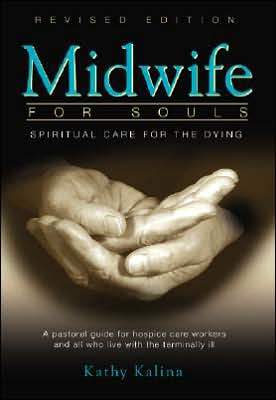Improving Care for the End of Life: A Sourcebook for Health Care Managers and Clinicians
A health care provider who wants to make life better for those nearing the end of life will find exactly what his or her organization needs in this sourcebook. Each chapter provides authoritative and comprehensive guidance on how to make significant improvements in America's health care system—right away. The ideas are proven, and the stories of teams that have put them to use will inspire and enlighten.\ As public sentiment and far too many research studies have shown, the health care...
Search in google:
A health care provider who wants to make life better for those nearing the end of life will find exactly what his or her organization needs in this sourcebook. Each chapter provides authoritative and comprehensive guidance on how to make significant improvements in America's health care system—right away. The ideas are proven, and the stories of teams that have put them to use will inspire and enlighten. As public sentiment and far too many research studies have shown, the health care system falls short in treating pain, in communicating with patients and their loved ones, and in helping dying patients live well despite disease. This is the only book that helps health care professionals use rapid cycles of innovation and measurement, a method that will enable any manager or provider in any health care system to improve care demonstrably within a few months. This compilation of insights, advice, pointers, tools, and resources relies heavily on the stories of the four dozen teams who shared in a yearlong collaboration to learn how to improve care at the end of life. Sponsored by the Center to Improve Care of the Dying and the Institute for Healthcare Improvement, this "Breakthrough Series Collaborative" brought together teams from the nation's leading hospitals, hospices, and health care organizations. Each tackled a series of problems that were affecting their patients. Led by Joanne Lynn and Andrea Kabcenell, the Breakthrough Series teams made changes in four critical areas: controlling pain and other symptoms; improving advance care planning; helping and comforting patients and families; and developing continuity of care. Nearly all made substantial improvements, and stories of successful changes highlight every chapter. Concerned clinicians and others will find here an effective approach to improving symptom management and other areas of care, while those interested in reform will discover ways to promote and implement it. The book provides specific information on all major causes of death and describes opportunities for improving the quality of life for those affected by them. Doody Review Services Reviewer:Susan A Jessell, MSN,CRNP,ACHPN(Western Pennsylvania Hospital)Description:First published in 2000, this is a sourcebook for organizations interested in improving end of life care. From instruction in the rapid cycle approach to quality improvement to tips on getting things started, this book is a wealth of information on specifically what can be done to improve end of life care in many different patient populations. Purpose:The purpose is to give readers the best available advice on how to make improvements in the healthcare systems in which they work. The book does this through examples of models of programs across the country including a compendium of resources and samples of data collection instruments. There are also examples of what did not work.Audience:This book would be most helpful not only to those in end of life care looking for ways to enhance and improve existing programs, but also for those who are creating programs in palliative care or hospice. Nurse managers, administrators of home care and hospice agencies, and medical directors will find real guidance.Features:The four parts cover quality improvement methods based on the rapid-cycle breakthrough approach with many examples of how practices were improved. The second part deals with changes that families and patients think are most important or would most benefit from. Part 3 describes the role of palliative care services and their financing with strategies for improving these areas. Part 4 addresses specific disease systems and ways to address and improve services and medical management in the patient population of Alzheimer's, end stage heart disease, dementia, and others. The list of resources at the end of each chapter is helpful. This updated edition has new chapters on continuity of care and expanded information on pain management, advanced care planning, and more.Assessment:This is a book that will be referenced often for its innovative ideas, resources, and usable tools.
Foreword Donald M. Berwick viiPart I Overview1 Introduction: Continuous Quality Improvement for Better End-of-Life Care 32 How to Make Improvement Happen 19Part II Improved Patient Care Through Improved Practice and Systems3 Preventing, Assessing, and Treating Pain 534 Managing Dyspnea and Ventilator Withdrawal 895 Beyond the Living Will: Advance Care Planning for All Stages of Health and Disease 1056 Supporting People in Difficult Times: Relationships, Spirituality, and Bereavement 1337 Continuity of Care: Improving Transitions, Continuity, and Coordination of Care in the Health Care System 163Part III Arrangements to Promote Reform8 Caring for the Caregivers: Helping Staff to Provide Good Care 1979 Hospital-Based Palliative Care Consults and Units 21710 Law, Policy, and Finance 241Part IV Opportunities in Specific Diseases11 Alzheimer's and Other Dementias: Opportunities to Honor Life 26512 Opportunities to Improve Care for Cancer Patients 29113 Offering End-of-Life Services to Patients With Advanced Heart or Lung Failure 30114 Depression and Delirium 32115 Conclusion: Getting Started 337Appendix: Instruments 347Resources 403Glossary 415References 425Index 437
\ Reviewer: Susan A Jessell, MSN,CRNP,ACHPN(Western Pennsylvania Hospital)\ Description: First published in 2000, this is a sourcebook for organizations interested in improving end of life care. From instruction in the rapid cycle approach to quality improvement to tips on getting things started, this book is a wealth of information on specifically what can be done to improve end of life care in many different patient populations. \ Purpose: The purpose is to give readers the best available advice on how to make improvements in the healthcare systems in which they work. The book does this through examples of models of programs across the country including a compendium of resources and samples of data collection instruments. There are also examples of what did not work.\ Audience: This book would be most helpful not only to those in end of life care looking for ways to enhance and improve existing programs, but also for those who are creating programs in palliative care or hospice. Nurse managers, administrators of home care and hospice agencies, and medical directors will find real guidance.\ Features: The four parts cover quality improvement methods based on the rapid-cycle breakthrough approach with many examples of how practices were improved. The second part deals with changes that families and patients think are most important or would most benefit from. Part 3 describes the role of palliative care services and their financing with strategies for improving these areas. Part 4 addresses specific disease systems and ways to address and improve services and medical management in the patient population of Alzheimer's, end stage heart disease, dementia, and others. The list of resources at the end of each chapter is helpful. This updated edition has new chapters on continuity of care and expanded information on pain management, advanced care planning, and more.\ Assessment: This is a book that will be referenced often for its innovative ideas, resources, and usable tools.\ \








